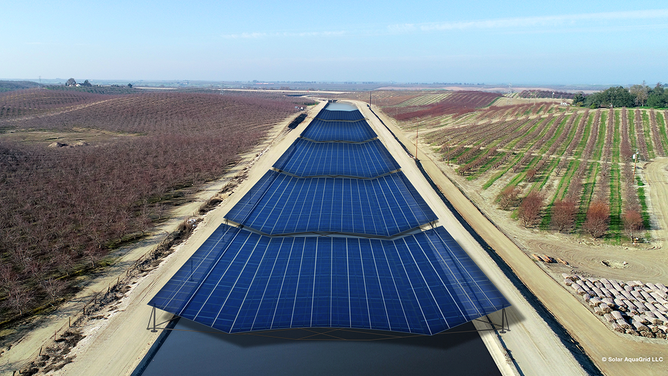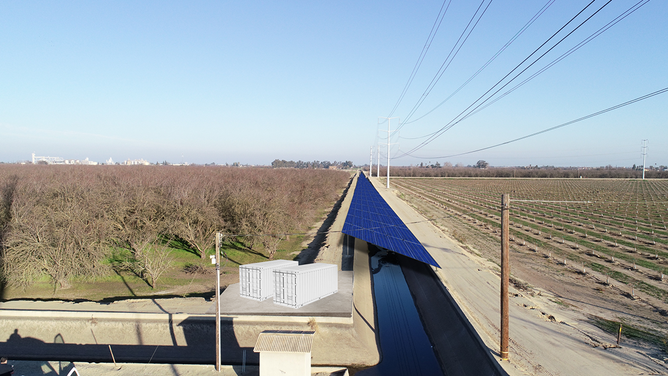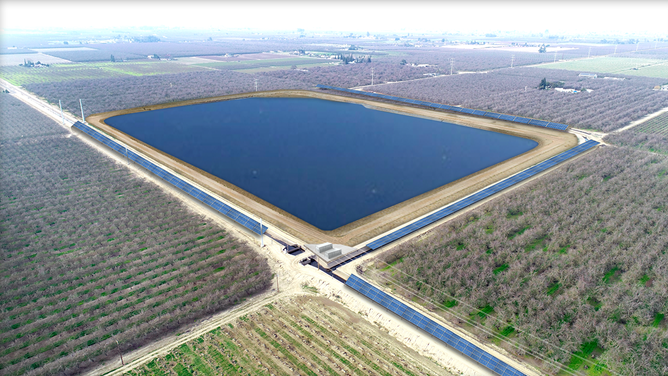California's first-in-the-nation project aims to cover canals with solar panels
Covering the 4,000 miles of canals in California with solar panels could save 63 billion gallons of water annually, according to a study
TURLOCK, Calif. - A utility company based in Central California has announced plans to cover sections of water canals with solar panels to increase renewable power generation and conserve water.
Project Nexus is a partnership between the Turlock Irrigation District, California's Department of Water Resources, Solar AquaGrid and the University of California, Merced. It aims to reduce water evaporation, improve water quality and generate renewable energy.
HOW TO WATCH FOX WEATHER ON TV

Project Nexus includes the installation of solar panel canopies over various sections of Turlock Irrigation District's irrigation canals.
(Project Nexus/Turlock Irrigation District)
The project comes after a 2021 study at UC Merced showed covering the approximately 4,000 miles of canals in California with solar panels could save 63 billion gallons of water annually, which is enough water to irrigate 50,000 acres of farmland or provide water for more than 2 million people.
And according to the study, the 13 gigawatts of solar power that the panels would generate every year would be equal to about 1/6 of the state's current capacity.
Project Nexus, however, will include three project sites along various sections of the TID's canal system and would produce 5 megawatts of renewable energy.
"The Solar AquaGrid model provides a combined, integrated response to addressing our water-energy nexus," said UC Merced professor Roger Bales. "It helps address California's underlying vulnerabilities while meeting both state and federal level commitments to produce renewable energy, preserve natural lands, lower greenhouse gas emissions and mitigate climate change."

Project Nexus includes the installation of solar panel canopies over various sections of Turlock Irrigation District's irrigation canals.
(Project Nexus/Turlock Irrigation District)
The state of California is funding the $20 million project, and groundbreaking is expected this fall. The hope is to complete the project in multiple locations across Central California sometime in 2024.
In an effort to keep the cost of the project low, the project will use existing TID infrastructure. Project officials also said that energy storage would be installed to see how storage facilities can support the local electric grid when solar generation is suboptimal due to cloud cover.
"In our 135-year history, we've always pursued innovative projects that benefit TID water and power customers," TID board president Michael Frantz said. "There will always be reasons to say 'no' to projects like this, but as the first public irrigation district in California, we aren't afraid to chart a new path with pilot projects that have the potential to meet our water and energy sustainability goals."

Project Nexus includes the installation of solar panel canopies over various sections of Turlock Irrigation District's irrigation canals.
(Project Nexus/Turlock Irrigation District)
While this project would initially benefit water and power customers in the TID area, the hope is that if it's a success, it can be expanded across California to help the state meet its water and energy needs.